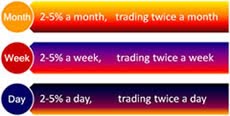Investment bank Goldman Sachs Group Inc. (GS), credit card company Visa Inc. (V), and footwear maker Nike Inc. (NKE) will join the blue-chip Dow Jones Industrial Average (DJIA).
Changing
three out of 30 stocks is a big shake-up for the 30-stock average in nearly a
decade.
The
three companies joining the DJIA will replace Bank of America Corp (BAC),
Hewlett-Packard Co (HPQ) and Alcoa Inc. (AA), all lower-priced stocks. Alcoa,
in particular, has been seen as a candidate for elimination for some time, as
the stock's market value of $8.5 billion is easily the lowest in the average.
In
effect, this means that weaker stocks get replaced by stocks which hold up a
better value. This makes the DJIA an index which in itself is geared for growth
and does not represent sound market representation as the S&P 500.
The
changes will be effective on September 23. It is the first three-for-three
change to the index since April 8, 2004, when American International Group
(AIG), Pfizer (PFE), and Verizon (VZ) replaced AT&T Corp (T), Eastman Kodak,
and International Paper (IP). The changes are the first in nearly a year, when
UnitedHealth Group (UNH) replaced Mondelez International (MDLZ).
As a result, funds, which gear their portfolio in
relation to the DJIA, have to make the same change in their portfolio: Sell out
of BAC, HPQ, AA and purchase shares of GS, V, and NKE. This action will trigger
additional supply and demand for the individual stocks in focus. Hence, spot
for a price move and take advantage of your knowledge. Some first opinions
stated that the real-money impact on those stocks removed and added (GS, NKE,
V) won't be huge as a relatively small amount of money is indexed to the DJIA.
If we take the biggest Funds as an example, the DIA has about $12B in market capitalization
vs. the SPY with $136B. However, three out of 30 stocks exchanged represent a
10% change which is significant and aside from the ETF’s geared towards the
DJIA all related mutual funds will need to make the same change too. You might ask yourself the question why Apple (AAPL) and GOOG were not added?
The DJIA is currently price-weighted, meaning the share price is more important to a company's weight in the index rather than market capitalization (S&P 500 base), and because it is weighted by price, companies that with higher prices have more influence on the average. In case Apple would be added right now, it would represent about 30% of the Dow. Considering this most likely leads to a mid-term need for the DOW to change its weighing scheme to not lose market representation and importance.
In the book: “My Stock Market Income (Amazon)”, we already explained how to take advantages of changes, when they are made to the S&P 500. Take advantage of the upcoming changes in the DOW Industrial Average: Put the stocks joining and leaving the DJIA on your watch list and trade their moves with a mid-term perspective when the NeverLossTrading or TradeColors.com signals indicate it to you.
We were quiet lately by putting together a trade alert program, which is still work in progress; however, you can take a first peek at: http://neverlosstrading.com/Alerts.html
Good
trading!

